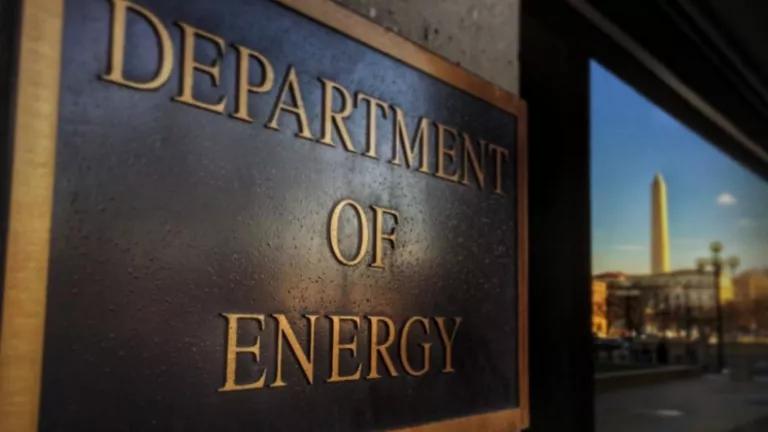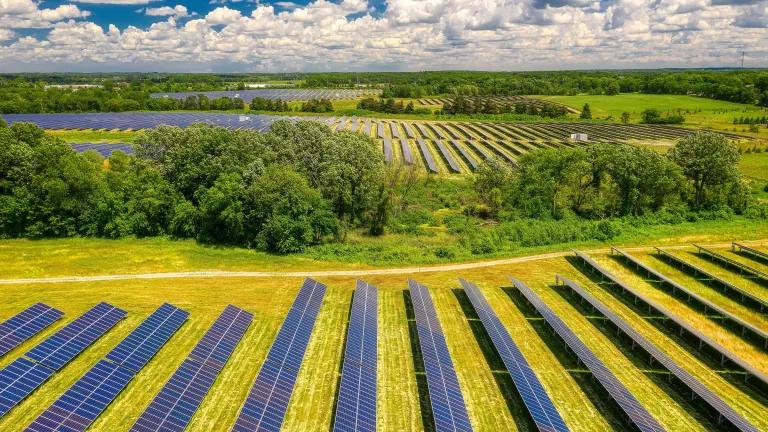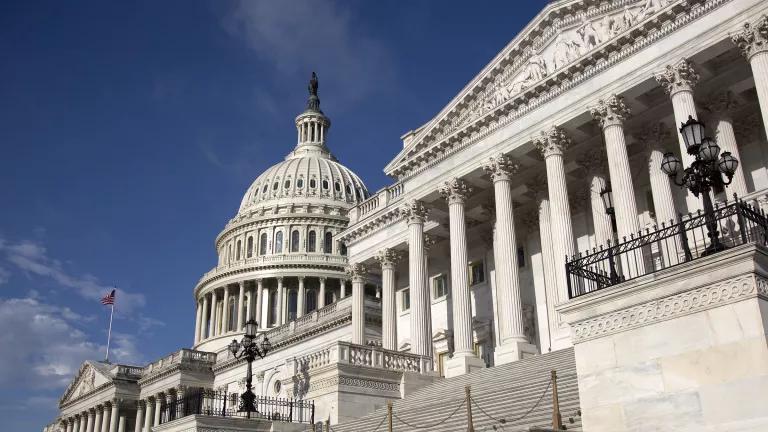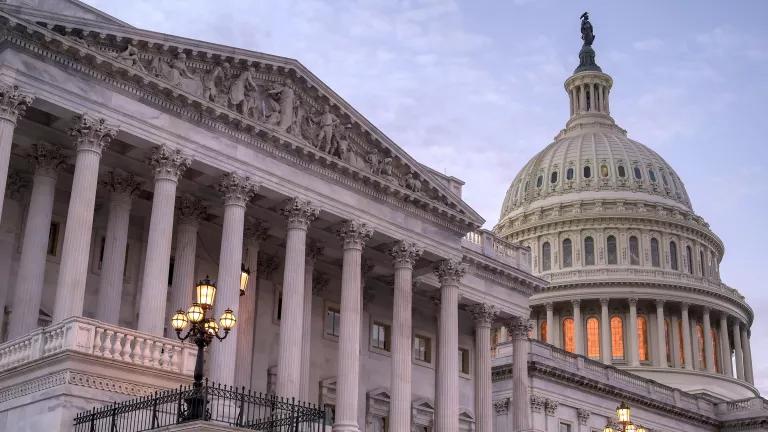Job for Day 1: Restore & Expand Efficiency Standards Program
When President-elect Joe Biden takes office, he’ll lead the United States in a time in which our country faces intertwined crises related to climate change, COVID-19 and its related economic effects, and racial injustice. Ambitious, cross-cutting and well-designed climate action by the federal government can address each of these crises.

When President-elect Joe Biden takes office, he’ll lead the United States in a time in which our country faces intertwined crises related to climate change, COVID-19 and its related economic effects, and racial injustice. Ambitious, cross-cutting and well-designed climate action by the federal government can address each of these crises by delivering climate, health, and jobs benefits with climate justice at the center. Strong energy efficiency standards will be key to that effort and a report out today shows just how much.
To limit global warming to 1.5 C, the U.S. needs to achieve net zero carbon emissions by 2050 by transforming to a clean energy economy—and we need to do so in a way that reduces the twin burdens of health-harming pollution and high energy bills that disproportionately affect low-income communities. To do all this, we’ll need to double down on energy efficiency as a key solution for averting the worst of the climate crisis, cutting air pollution from fossil power plants, and cutting energy bills.
A research report released today from the Appliance Standards Awareness Project (ASAP) and the American Council for an Energy-Efficient Economy (ACEEE), A Powerful Priority: How Appliance Standards Can Help Meet U.S. Climate Goals and Save Consumers Money, highlights the important role of the U.S. Department of Energy (DOE) energy efficiency standards program in fighting the climate crisis and reducing energy bills. Under the Trump administration, the decades-old DOE program has gone off the rails; the Biden administration should make restoring the program’s success and its expansion a top priority.
Today's energy efficiency standards for appliances quietly deliver hundreds of dollars in annual utility bill savings for the average U.S. household while cutting greenhouse gas emissions. Updating these existing standards within the next few years could make their impact even greater, according to the ASAP/ACEEE report.
By ensuring that products such as water heaters, furnaces, and light bulbs are as efficient as they can be, the U.S. can avoid up to 2.9 billion metric tons of carbon dioxide emissions through 2050—equivalent to the emissions of approximately 25 coal plants over that period. The average household would save more than $100 a year in 2030, increasing to $230 in 2035 and nearly $350 in 2050.
The updates to existing standards don't require any dramatic innovations: they're achievable in the near term with technology available today, according to the research report. Prioritizing updates to current standards—and adding standards for additional products such as computers, monitors, TVs and air purifiers—is one straightforward and important way the U.S. can make up for lost time on climate progress. As part of his clean energy plan, President-elect Joe Biden has highlighted efficiency, a common-sense approach given that energy efficiency policies including appliance standards could slash the nation's emissions in half by 2050.
Energy efficiency standards for everyday items drive improvements that save energy and money for consumers. Because of standards, clothes washers today use 70 percent less energy on average compared to models available in 1990, and refrigerators use about half as much, all while performing the same or better than they did before. Already, these standards will save a cumulative $2 trillion on utility bills by 2030 and avoid nearly 8 billion metric tons of emissions.
As the report points out, DOE appliance standards also play a critical role in helping to ensure that savings from efficiency improvements reach the people who need them the most. One in three U.S. households faces challenges in paying energy bills and heating and cooling homes, and many Black, Hispanic and Native American households have the highest energy burdens. And one-quarter of all renters have extremely low incomes. Because landlords have no incentive to purchase efficient appliances when tenants pay the energy bills, renters are much less likely to have efficient appliances. The DOE energy efficiency standards program helps to improve equity by reducing energy burdens and ensuring that all appliances sold meet minimum federal efficiency standards, complementing other methods of supporting low-income consumers.
Beyond saving money and energy, appliance standards support a transition to all-electric buildings that run on an increasingly clean energy grid. Within the next three decades, updated standards alone could reduce peak electricity demand by almost 90 gigawatts, or about 13 percent of current total peak demand, according to the new report. Lowering that peak demand is important, because it allows more buildings to switch to appliances that run on electricity rather than fossil fuels without stressing the system.
The report looked at the impact of updated standards across 47 products and found that the U.S. has a potential to save a cumulative 1.5 billion metric tons of emissions through 2050 even under a scenario with a low-carbon electricity grid. Water heaters would deliver the largest cumulative emissions reductions by far. Heat pump technology can reduce the energy consumption of these appliances by more than 60 percent for electric versions, while condensing technology can cut the energy consumption of gas-fueled water heaters by more than a fifth. Commercial/industrial fans, furnaces, and light bulbs also ranked at the top in terms of potential emissions reductions.
Even more progress is possible by broadening existing standards to include products such as air purifiers, commercial light fixtures and lamps, computers, portable electric spas, and televisions. Savings could be further increased by improving the test procedures used to evaluate products' water and energy use so that they provide a better picture of real-world consumption.
The Department of Energy (DOE) is legally obligated to review existing standards under a schedule established by Congress. But under the Trump administration, DOE has fallen far behind schedule. In fact, NRDC, joined by consumer and low-income consumer advocates as well as other partners, just sued DOE over its inaction on 25 standards that would save households and businesses at least $22 billion annually on their utility bills. Fourteen states plus New York City and Washington D.C. have filed a parallel challenge.
Instead of using the national appliance standards program to make American products more competitive, cheaper to run, and better for the climate, the Trump DOE has waged an assault on this long-standing program, which has enjoyed bi-partisan support for decades. Specifically:
- DOE rolled back light bulb standards that would have saved consumers $14 billion on their utility bills and avoided 38 million tons of climate-warming carbon dioxide emissions every year, actions now being challenged in the courts.
- DOE finalized changes to its efficiency standards process that will slow down—and create hurdles to—future efforts to make America’s appliances and equipment more efficient. (Several groups sued.)
- NRDC, Sierra Club, CFA, and others also successfully sued to finally force the DOE to publish four long-delayed standards in the Federal Register—the final necessary step—almost three years later than they should have been finalized.
- DOE last month created a new class of dishwashers that wouldn’t be subject to any water or energy efficiency standards at all.
These efforts to undercut U.S. energy efficiency are shameful, but certainly reversible. We have an opportunity now to restore the national appliance program's remarkable momentum and take advantage of emissions-reducing opportunities that have gone ignored for too long. Today’s ASAP report provides a blueprint for action for the Biden administration.




